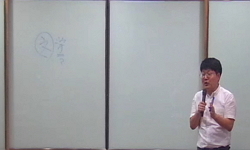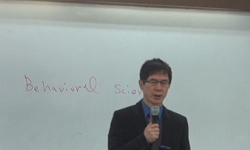The main purpose of this research is to explore the conceptualization process of Korean “boundary” expressions using a cognitive semantics approach. In Chapter 2, I examine the locations and markers of “boundary.” The extracted linguistic exa...
http://chineseinput.net/에서 pinyin(병음)방식으로 중국어를 변환할 수 있습니다.
변환된 중국어를 복사하여 사용하시면 됩니다.
- 中文 을 입력하시려면 zhongwen을 입력하시고 space를누르시면됩니다.
- 北京 을 입력하시려면 beijing을 입력하시고 space를 누르시면 됩니다.

한국어에 나타나는 ‘경계’ 표현의 개념화 양상 = A Study of the Conceptualization Process of Korean ‘Boundary’ Expressions
한글로보기부가정보
다국어 초록 (Multilingual Abstract)
In Chapter 2, I examine the locations and markers of “boundary.” The extracted linguistic examples from the KAIST Corpus and the Sejong Corpus are divided into the two different types: “the boundary of A” and “the boundary between A and B.” It is shown that boundary markers could be tangible objects such as “fence” or “tree” and abstract concepts like “time” or “event” as well.
In Chapter 3, I explicate the existing patterns of “boundary” by searching such expressions as “X-verb the boundary” or “The boundary is X-verb.” The results were classified into the 4 different types: a boundary to be set, a boundary that exists, a boundary that changes, and a boundary to be rejected. Specific examples are given and discussed for each type.
In the final chapter, metaphorical expressions are investigated in regard to the concept of “boundary” itself. Conceptual metaphors of a “boundary” in the Korean language seem to appear in different patterns, as follows: [a boundary is a concrete object], which can be built, broken, established, shaken, and smashed; [a boundary is a line], which can be pictured and erased; [a boundary is a place], which can be traversed and invaded; [a boundary is a subject of experience], which can be felt and experienced.
This paper is one of cognitive semantics studies based on the everyday Korean language. Its significance lies in the fact that the conceptualization process of the “boundary” expressions were examined using the corpus data. I hope this research will contribute to the contemporary humanistic approaches that deal with the boundary phenomenon.
The main purpose of this research is to explore the conceptualization process of Korean “boundary” expressions using a cognitive semantics approach.
In Chapter 2, I examine the locations and markers of “boundary.” The extracted linguistic examples from the KAIST Corpus and the Sejong Corpus are divided into the two different types: “the boundary of A” and “the boundary between A and B.” It is shown that boundary markers could be tangible objects such as “fence” or “tree” and abstract concepts like “time” or “event” as well.
In Chapter 3, I explicate the existing patterns of “boundary” by searching such expressions as “X-verb the boundary” or “The boundary is X-verb.” The results were classified into the 4 different types: a boundary to be set, a boundary that exists, a boundary that changes, and a boundary to be rejected. Specific examples are given and discussed for each type.
In the final chapter, metaphorical expressions are investigated in regard to the concept of “boundary” itself. Conceptual metaphors of a “boundary” in the Korean language seem to appear in different patterns, as follows: [a boundary is a concrete object], which can be built, broken, established, shaken, and smashed; [a boundary is a line], which can be pictured and erased; [a boundary is a place], which can be traversed and invaded; [a boundary is a subject of experience], which can be felt and experienced.
This paper is one of cognitive semantics studies based on the everyday Korean language. Its significance lies in the fact that the conceptualization process of the “boundary” expressions were examined using the corpus data. I hope this research will contribute to the contemporary humanistic approaches that deal with the boundary phenomenon.
목차 (Table of Contents)
- 1. 머리말
- 2. 경계의 위치와 표지들
- 1) 경계의 위치
- 2) 경계의 표지들
- 3. 경계의 존재 양태
- 1. 머리말
- 2. 경계의 위치와 표지들
- 1) 경계의 위치
- 2) 경계의 표지들
- 3. 경계의 존재 양태
- 1) 경계는 정하는 것
- 2) 경계가 존재함
- 3) 경계는 변하는 것
- 4) 경계를 거부함
- 4. 경계 표현에 나타나는 은유
- 1) 경계는 사물
- 2) 경계는 선
- 5. 맺음말
- 참고문헌
- ABSTRACT
동일학술지(권/호) 다른 논문
-
- 이화여자대학교 이화인문과학원
- 박이문
- 2010
- KCI등재후보
-
- 이화여자대학교 이화인문과학원
- 진은영
- 2010
- KCI등재후보
-
- 이화여자대학교 이화인문과학원
- 김은령
- 2010
- KCI등재후보
-
- 이화여자대학교 이화인문과학원
- 천현순
- 2010
- KCI등재후보




 RISS
RISS







